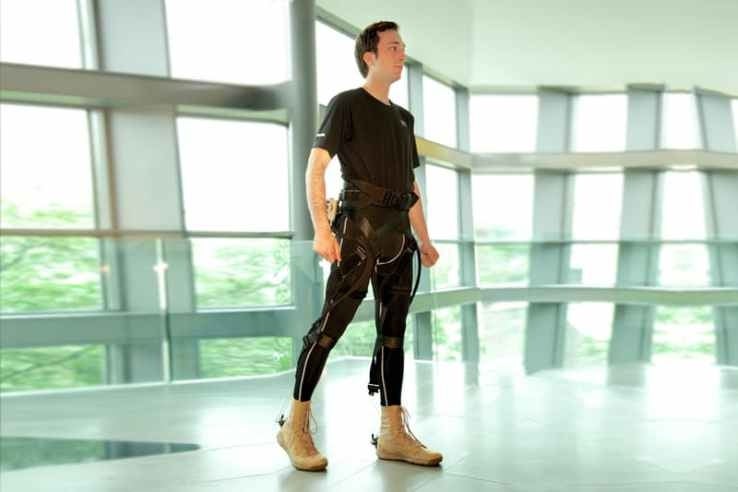ReWalk Robotics is eyeing profitability in the near future with new products set to come online in different markets. The Marlborough-based firm manufactures wearable robotic suits for stroke victims and people with spinal cord injuries. In an interview with WBJ, CEO Larry Jasinski said some patients have even been able to complete marathons.
Explain the current state of ReWalk systems in the U.S.
In the U.S., our primary product is the ReWalk system for spinal cord injuries. We just recently gained our first major insurer, Cigna, which began providing coverage on Feb. 13. It’s the fourth largest insurer in the U.S., and that milestone was important in Germany. Once one group did it, others started to follow. We believe the leadership of Cigna will expand the number of companies looking at it.
The U.S. Department of Veterans Affairs is also providing it, and there are others that cover it ona case-by-base basis. More than 500 of those systems are placed worldwide, and roughly 60 to 70 percent are in the U.S.
What about the Restore device for stroke victims?
That product has completed its U.S. clinical trial. Spaulding was one of the leading centers on it. The U.S. Food & Drug Administration submission was filed in February. We hope there won’t be too many questions about it, and that it could be available for U.S. clinics around the middle of the year.
Will that be a big step for the company?
It’s a big step in terms of the economic status of ReWalk. It’s dramatic when someone that is paralyzed can walk again, but there are so many more people that have strokes. Gait training devices are currently covered by the insurance industry, so once we start selling that product and it’s used in clinics, we should be able to get some fairly rapid penetration.
We anticipate sales growth there to be dramatically faster than the ReWalk.
What are your largest geographical markets?
For spinal cord injuries, the U.S. market is about 280,000 people, but only about 10 percent qualify from a medical point of view. The market in Germany is more mature, but the majority of our sales will be here. Other countries like France, the U.K. and Italy are moving at a slower pace.
For the Restore, there are a larger number of clinics in China, and there’s a higher incidence rate of stroke. That will be our biggest product line in terms of pure dollars.
Will ReWalk begin turning a profit once the Restore becomes available?
It’s part of the path. The spinal cord injury device will grow more with German coverage and added U.S. growth, and the Restore system should gain FDA approval this year. Those two factors should give us a significant revenue increase.
It’s also important from a cost of view in that we can use the exact same sales training, service and distribution organization to sell both products. Revenue is increasing and expenses are decreasing. We do have a pathway now to break even and profitability, but that isn’t an official forecast or guidance.
Has the cost of the systems been prohibitive?
The ReWalk system is approximately $100,000 with a five-year warranty, and the Restore is about $20,000 with a two-year warranty.
For the spinal cord injury system, we’re going to continue to mostly rely on insurance coverage. If you’re an injured veteran, it doesn’t cost you anything. Most insurers have paid for it in full.
The Restore system does something no other device has ever done: dorsal and plantar flexion. It allows you to walk at a higher rate of speed and a further distance with a more symmetrical pattern.
Our belief is we can present an economic model to rehab centers to begin at $1,100 a month to lease the systems. More patients can be treated more effectively, so this equation makes it profitable at the beginning for rehab centers.
Is there a way to reduce those costs, especially for the ReWalk?
It will come down when volume increases. We’ve been selling 100 or so a year. As insurance sales pick up, we expect that margin to increase.
We know about systems for spinal cord injuries and strokes. Are any other markets being explored?
In addition to a licensing agreement with Harvard University, we have a collaboration agreement through six years. Together, we’ve developed a personal-use, smaller and less expensive device for stroke victims.
In addition, we also have designs and grant funds to develop a system to treat patients with MS and Parkinson’s disease.
And people have run marathons using the ReWalk system?
So far we’ve had two London Marathon runners use the system, but there have been about 40 10K races done. It wasn’t designed for that, and it takes them a lot longer, but a lot of patients use the systems for this. The guy that just did the London Marathon did in 27 hours.
This interview was conducted and edited for length and clarity by WBJ Staff Writer Zachary Comeau.

